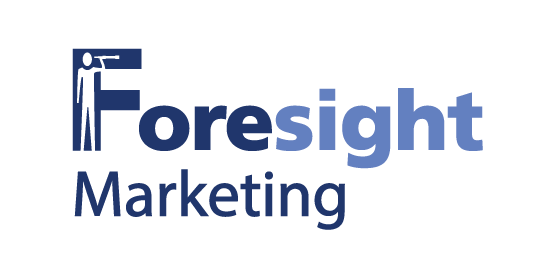My family knows I make a superb chocolate chip cookie, so it’s probably no surprise that my favorite Ina Garten, “the Barefoot Contessa”, quote is, “You can be miserable before you have a cookie, and you can be miserable after you eat a cookie, but you can’t be miserable while you are eating a cookie.”
But her quote in this title is also appropriate for today’s topic. Namely, taking an ordinary product or technology (also an extra-ordinary one) and finding the right market is akin to “making it really special”. Businesses accomplish this by performing the Market Assessment.
Market assessment is defined as the process of acquiring objective and reliable information that determines the commercial value of a new technology, business or company.
Both startups and large corporations need to perform Market Assessments. Start-ups usually have a promising technology that can be used in multiple markets. Since they usually only have one shot before their money runs out, it is imperative that they select the correct market.
The Market Assessment for established companies, is viewed as a relatively easy task since they have established markets and customer knowledgeable. However, in the unending search for growth that is the mantra of todays business leaders, finding new markets is essential and innovation is the avenue. As a result, for large companies investigating innovative products, the Market Assessment is not so straightforward.
Let’s examine a real-world example where a Market Assessment could have made the difference in business success or failure. A small medical manufacturer developed a device that could remove melanomas (skin cancer lesions). Unfortunately, the company selected a development path without performing a Market Assessment. On the surface, who could blame them. The company knew the market size was 24 million surgeries and $300 million dollars in annual revenue. They also knew that dermatologists used technology developed in the 1930s and the procedure generated a 66% gross profit to the doctor. Why wouldn’t the customer want a better technology?
Two years after commercialization the company failed, principally because the dermatologists were comfortable using this old technology and saw no need to change, especially when it would cost them $40 more per treatment. A customer needs investigation indicated that dermatologists desperately needed a complex melanoma removal device. The tragedy of this business situation is the company had designed a more complex melanoma removal product, but ran out of funding before it could be commercialized – $4 million dollars and several years of work wasted because of their failure to assess the market.
Let’s review some important principles for conducting a Market Assessment so you can avoid misunderstanding the market potential for your product.
Conducting the Market Assessment
A market analysis should be conducted in six steps:
- Prepare a research plan to map out the important data and how to collect it
- Gather data through secondary market research to understand basic facts. There is a lot of helpful data available on the Internet. Information gaps will emerge.
- Design a primary market research data collection instrument to fill in the information gaps.
- Conduct primary market research, using focus groups or personal interviews to understand the complex issues that require deep, thoughtful responses. For simpler issues, an Internet questionnaire can be useful.
- Perform data analysis and derive recommendations based upon the data.
- Make your decision.
What data to collect in a Market Assessment?
For a medical product there are five main topics to cover:
- Clinical / Scientific: does the technology deliver a significant clinical benefit? Can the product deliver this?
- Commercial / Financial: is the size of the market worth the investment?
- Customers and Segmentation: are there unmet / underserved customer needs? Is there a niche available to command?
- Competition: will the competitive environment allow the company to establish a foothold and drive business success?
- Strategic: does the company have what it takes to succeed?
Important topic questions
Here are some important questions to ask for each of the 5 topics:
Clinical / Scientific
- Is the medical condition important to treat?
- Does the product significantly address the disease?
- Will steps that prevent the condition have a significant impact on the need for the product in the future ?
- Are there diagnostic methods capable of detecting the condition the product treats?
- How well do current treatment methodologies work?
- What are the shortcomings to current treatment approaches? Doe the product improve on them?
- Is there a cost-effective regulatory approval pathway?
Commercial / Financial
- What is the incidence / prevalence of the condition?
- What is the total market revenue and growth rate? Total available market?
- Is there an existing reimbursement code? How difficult would it be to gain a new code?
- Does your solution establish competitive barriers? Successfully overcome them?
- What is the profitability? Operating margin? ROI?
Customers and Segmentation
- Who is the customer: user, financial, technical?
- What are they satisfied / dissatisfied with?
- What channel is used to reach the customer? Do we have an existing channel? If not, an we access / develop one?
- Who are the decision-makers?
- Where does the money come from? Does the budget holder obtain financial benefits?
- Are there market segments that fit your product better? Being ignored? Higher profitability? Need the product more?
Competition
- Who are the direct competitors?
- What is their pricing / strategy?
- How does their customer solution compare to yours?
- What are their strengths? Can your company overcome them?
- What are their weaknesses? How can your company leverage them?
- How strong is their sales organization? Their customer relationships?
- How can future / indirect competitors impact business growth?
- What substitution products could impact your product’s sustainability?
Strategic
- What market trends will positively / negatively impact the product?
- How do the entry barriers impact the opportunity?
- What environmental threats or opportunities (e.g., government, legal) impact the product?
- Do you need to develop new capabilities, or do they already exist in the company?
- Does the development timeframe allow you to capitalize on the market opportunity?
- Will the clinical trial deliver the endpoints to gain regulatory approval? Will the achievable clinical indications provide market leverage?
- What potentially disruptive technology exists?
Once the facts are collected, they need to be fully analyzed to assess the business risks and opportunities for the technology. Here are some key questions to analyze:
- How attractive is the market?
- Is there a niche you can command?
- Is there a better market than you initially thought?
- Do you understand the customer enough to serve the need (and make money doing it)?
- What are the profitability prospects?
- Do you have the capability to?
- Address customer needs
- Provide better solutions
- Reach the decision-makers & convince them
- Differentiate from the competition
- Overcome competitive strengths
- Leverage competitive weaknesses
- Is the strength of the competition insurmountable?
Answering these questions will help you assess the market opportunity. And when you’ve completed your Market Assessment, enjoy a chocolate chip cookie.

